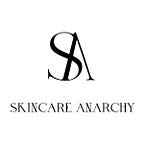7 Forms of Vitamin C in Cosmetics and Their Benefits for Skin
Vitamin C, or ascorbic acid, is a chemical compound and one of the best-known antioxidants in skin care, used worldwide in various forms: creams, serums, toners, etc.
Vitamin C mainly performs the biological functions of a restorer and accelerator of some metabolic processes in the skin.
Vitamin C fights photoaging issues from UV damage to the skin, takes part in collagen activation synthesis, and has anti-inflammatory properties. Vitamin C also prevents melanin synthesis by blocking the tyrosinase enzyme. Tyrosinase, by the way, is a substance that acts as the primary regulator of melanin pigment synthesis. In addition, vitamin C protects vitamin A from oxidation and enhances its antioxidant effect.
If you have ever used vitamin C cosmetics and experienced an adverse reaction or no result at all, do not think this ingredient is not suitable for you; potentially, you may have used the wrong form for your skin. It’s worth knowing that not all cosmetics with vitamin C are good for our skin. Its properties depend on its form, which the manufacturers put into their product.
The most effective forms of vitamin C in cosmetics:
- Ascorbic Acid (AA) / L-Ascorbic Acid (LAA) — the most common, active and natural ascorbic acid. All vitamin C derivatives are converted to ascorbic acid in our skin. Cosmetics with AA require a low pH (< 3.5) to maintain stability, so its use on sensitive skin with signs of structural damage is not desirable. The product’s effectiveness with AA increases with concentration; the maximum for use is 20%. Additionally, the effect of AA is increased when combined with ferulic acid and vitamin E. Due to its instability, it is also essential how the product is stored — opaque packaging is the best way to preserve the formula. So, if you are atopic, suffer from psoriasis, rosacea, or eczema, or have sensitive and reactive skin, avoid ascorbic acid in cosmetics.
• Magnesium Ascorbyl Phosphate (MAP) is the most stable form of ascorbic ester. It does not require a low pH, so this form is more suitable for sensitive skin and skin with signs of a violation of the structure and function of the epidermal barrier. Look for this particular ingredient in vitamin C cosmetics if you don’t want to avoid this fantastic antioxidant. This form easily penetrates the cells and has enhanced anti-aging and brightening properties. The only negative of this ingredient is that some people claim that products containing it are poorly absorbed.
• Sodium Ascorbyl Phosphate (SAP) is another stable form of vitamin C that is effective in treating acne and even scarring. Unfortunately, it is not entirely possible if you hope to solve the problem exclusively with this form. Still, it can be combined with other anti-acne and scarring products to achieve the desired results.
• Ascorbyl Palmitate (AP) is a complex compound of ascorbic and palmitic acids. The main property — it protects the skin from damage by ultraviolet radiation. It is a potent antioxidant that prevents photoaging. It’s excellent if ascorbyl palmitate is part of sunscreen. Another bonus is that when combined with SAP, it helps control sebum production, which makes it great for oily and acne-prone skin.
• Ascorbyl Glucoside (AG) is a compound in which ascorbic acid is stabilized by glucose. It has a significantly enhanced brightening property, best revealed in combination with niacinamide.
• Tetrahexyldecyl Ascorbate (THD) is the best vitamin C derivative available today and is a stable vitamin C derivative. This derivative has a fatty component, so products containing it might have a creamy texture that provides moisturization and leave our skin hydrated. It would be a great option for dry and even mature skin. Also, THD has three other abilities of ascorbic acid: it provides antioxidant protection from both UVB and UVA rays, increases collagen synthesis, and has a skin-lightening effect by reducing melanogenesis.
• Ethylated L-Ascorbic Acid (ELAA) / 3-O-ethyl-L-ascorbic acid is the only form of vitamin C that is not pure ascorbic acid that does not require conversion into the skin into a form that works. And it is also the newest derivative of ascorbic acid. The skin immediately recognizes it as ascorbic acid, so it works similarly. The ethylated component also makes it very stable. ELAA has very enhanced brightening properties, which are suitable for treating various types of hyperpigmentation (melasma, chloasma, post-acne, etc.).
In conclusion, vitamin C is extremely popular among the substances added to cosmetic products due to its beneficial properties. And each type has its own advantages and disadvantages. So thankfully, due to the existence of various forms of vitamin C, each of the users will find the most suitable one for themselves 🍊.
Sources:
Austria, R, Semenzato, A, Bettero, A. Stability of vitamin C derivatives in solution and topical formulations. J Pharm Biomed Anal. 1997; 15(6): 795–801.
Enescu, CD, Bedford, LM, Potts, G, Fahs, F. A review of topical vitamin C derivatives and their efficacy. J Cosmet Dermatol. 2022; 21: 2349 — 2359.
Hakozaki, T, Takiwaki, H, Miyamoto, K, et al. Ultrasound enhanced skin-lightening effect of vitamin C and niacinamide. Skin Res Technol. 2006; 12(2): 105–113.
Khan, H, Akhtar, N, Ali, A. Assessment of Combined Ascorbyl Palmitate (AP) and Sodium Ascorbyl Phosphate (SAP) on Facial Skin Sebum Control in Female Healthy Volunteers. Drug Res (Stuttg). 2017; 67(1): 52–58.
Klock, J, Ikeno, H, Ohmori, K, et al. Sodium ascorbyl phosphate shows in vitro and in vivo efficacy in the prevention and treatment of acne vulgaris. Int J Cosmet Sci. 2005; 27(3): 171–176.
Stamford, NPJ. Stability, transdermal penetration, and cutaneous effects of ascorbic acid and its derivatives. J Cosmet Dermatol. 2012; 11: 310–317.
Telang, PS. Vitamin C in dermatology. Indian Dermatol Online J. 2013; 4(2): 143–146.
Zerbinati, N, Sommatis, S, Maccario, C, et al. The Anti-Ageing and Whitening Potential of a Cosmetic Serum Containing 3-O-ethyl-l-ascorbic Acid. Life (Basel). 2021; 11(5): 406.
Author: Jana Natalchuk
Concept: Dr Ekta Y. MD MBA MS
